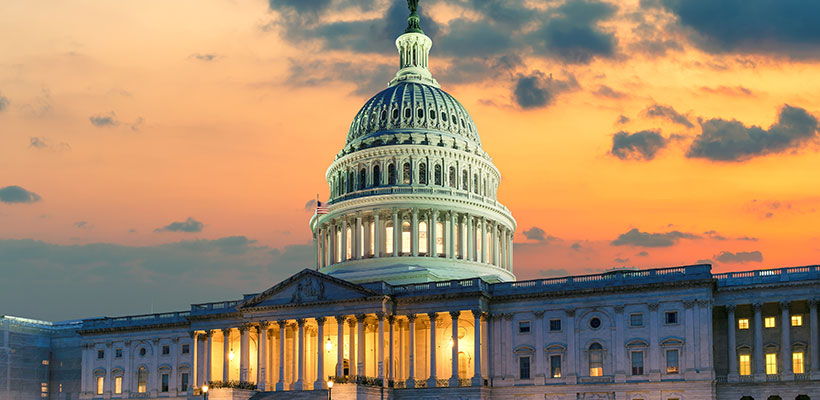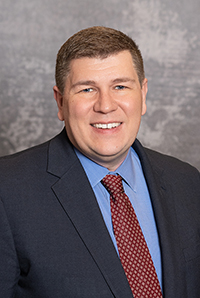SECURE 2.0 Retirement Reform Legislation Passed
 7 min read
7 min read

The SECURE Act 2.0 is part of the spending bill released on Dec. 19, 2022 and signed into law on Dec. 29 2022. During the past year we have heard a lot about SECURE 2.0 and were unsure if it would be passed this year. We are happy the bill has passed and believe it will expand access to employer retirement plans. SECURE 2.0 builds on the work of the SECURE Act of 2019 which expanded access to employer retirement plans and encouraged employee use of the plans.
Below are a few features of SECURE 2.0:
Expansion of automatic enrollment requirement – For plans started after Dec. 31, 2024, employees must be automatically enrolled at a 3% (pre-tax) deferral rate with a required feature that escalates automatically enrolled employees by 1% each year, up to a 10% cap. Small businesses with 10 or fewer employees, churches, governmental employers and employers that have been in business for less than three years are excluded.
Starter 401(k) plans – Employers who do not sponsor a plan may offer a starter 401(k) plan. All employees would be automatically enrolled at a 3% (pre-tax) deferral rate with a required feature that escalates automatically enrolled employees by 1% each year, up to a 15% cap. Contributions are limited to $6,000 and catch-up contributions are limited to $1,000. These are deferral only plans and are effective for plan years beginning after Dec. 31, 2023.
Catch-up contributions – Effective for plan years beginning after Dec. 31, 2023, catch-up contributions must be made as Roth contributions for any participant who earns more than $145,000 (as indexed). For participants between the ages of 60-63, the catch-up limit is increased to the greater of $10,000 or 50% more than the regular catch-up amount. These amounts will be indexed for inflation after 2025 and this provision is effective for tax years after Dec. 31, 2024.
Start-up credit increased – The credit has increased from 50% of administrative costs up to $5,000 to 100% for employers that have 50 or fewer employees, with a per employee cap of $1,000. The credit phases out for employers with 51 to 100 employees. This is effective for plan years beginning after Dec. 31, 2022. Start-up credits also apply to employers that join a Multiple Employer Plan (MEP) or Pooled Employer Plan (PEP), regardless of how long the MEP or PEP has been established.
Long-term, part-time employees – Part-time employees are eligible to participate in the plan if they complete 500 hours of service within two consecutive years. This is effective for plan years beginning after Dec. 31, 2024. This is a change from the original SECURE Act, which required three consecutive years. In addition, vesting service is only counted from 2021 forward where an employee worked 500 hours. This does not apply to collectively bargained plans.
Student loan payments can be treated as deferrals so that participants receive a matching contribution. – This is an optional provision and testing can be done separately for those who receive match based on deferrals versus those who receive match on a student loan payment. This provision is effective for plan years beginning after Dec. 31, 2023.
Saver’s match – Currently there is a credit for employees who make contributions to a retirement plan based on their income. The credit is being changed to a tax refund as a federal matching contribution that must be paid into a taxpayer’s IRA or retirement plan. The match is 50% of contributions up to $2,000 per individual. The match phases out between $25,500 and $35,500 for those that file single tax returns. If filing jointly, the amount phases out between $41,000 and $71,000. This is effective for tax years after Dec. 31, 2026. The provision also directs the Treasury Department to increase public awareness of the Saver’s match.
Required minimum distribution age increase –SECURE 2.0 increases the age to 73 starting Jan.1, 2023 and to 75 on Jan. 1, 2033.
Employer matching and/or non-elective contributions may be treated as Roth contributions – This is optional and permitted for 401(k), 403(b) and governmental 457(b) plans. This is effective immediately and the plan would have to permit this.
Other provisions:
- Expansion of the Employee Plans Compliance Resolution System (EPCRS) that provides for more self-correction – Guidance is to be provided by the Treasury Department within two years.
- Mandatory force out limit increased from $5,000 to $7,000 for distributions made after Dec. 31, 2023.
- $1,000 emergency distribution that can be repaid within three years – Additional distributions cannot be taken during the three-year period that starts when the distribution is taken and while the distribution is outstanding. The 10% penalty does not apply. Participants are permitted one distribution per year that is not subject to the 10% penalty. This is effective for distributions made after Dec. 31, 2023.
- Optional emergency savings accounts up to $2,500 for non-highly compensated employees – Contributions are treated as Roth deferrals, eligible for matching contributions, and distributions are treated as qualified distributions so that earnings are non-taxable. The first four withdrawals from each plan year may not be subject to fees. Employees may roll this into their 401(k) plan at a new employer or an IRA if they terminate employment.
- 403(b) plans may offer collective investment trusts (CITs) effective immediately.
- Overpayments do not have to be recouped from retirees who were mistakenly paid.
- Effective immediately, the penalty for failing to take a required minimum distribution is reduced from 50% to 25%. If the failure is corrected in a timely manner, the excise tax can be reduced to 10%.
- Effective immediately, participants in 457(b) plans may request deferral rate changes at any time instead of at the beginning of the month.
- Qualified birth or adoption distributions can only be repaid within three years without paying the 10% penalty and applies to distributions after the enactment of this change.
- Employees may certify hardship event reason effective immediately.
- Family attribution rules changed by removing attribution for spouses with separate and unrelated businesses who reside in community property states. Attribution is also eliminated for parents who have minor children and separate and unrelated businesses. This is effective in plan years beginning after Dec. 31, 2023.
- Amendments that result in an increase to benefits for the previous plan year are permitted until employer tax return due date. Effective for plan years beginning after Dec. 31, 2023.
- Effective for plan years beginning after Dec. 31, 2022, notices are eliminated for participants who are not participating.
- Treasury has two years to amend regulations so that some notices may be consolidated.
- Requires Treasury to create standardized sample forms for direct rollovers and trustee-to-trustee transfers by Jan. 1, 2025.
- Employees with a terminal illness will not be subject to the 10% penalty tax effective immediately.
- Employers can replace a SIMPLE IRA or a SIMPLE 401(k) with a safe harbor plan anytime during the plan year. This is effective for plan years beginning after Dec. 31, 2023.
- Group of plans – Only individual plans within the group that are subject to audit requirements are required to have an annual audit. This does not require an audit of all plans included in the 5500 filing.
- Like 401(k) plans, hardship withdrawals will be available from all sources in 403(b) plans.
We are still analyzing the bill but there are many key features included. There is still much more information to come from the IRS and Department of Labor. Overall, we think SECURE 2.0 will help participants and employers save for retirement, which will help them to fulfill life.
Information provided is gathered from sources believed to be reliable; however, we cannot guarantee their accuracy.

John T. Webb
MBA, ERPA, QKA, QPA, TGPC, CPFA, ASRI
Vice President of Compliance
Retirement Plans
Interested in representing Ameritas?
Discover the advantages we offer industry professionals of all kinds.
